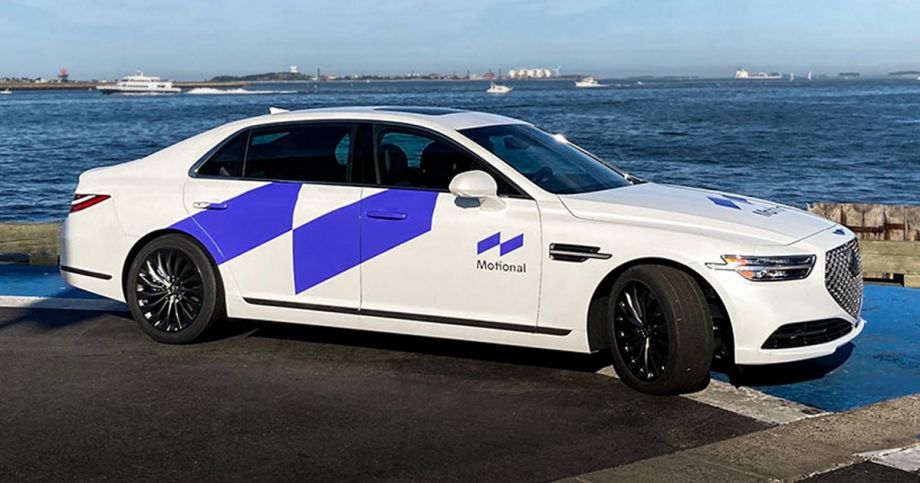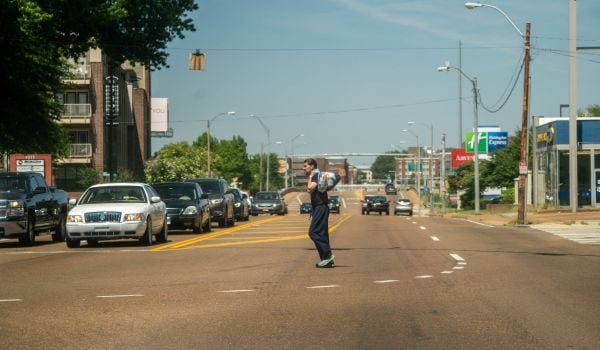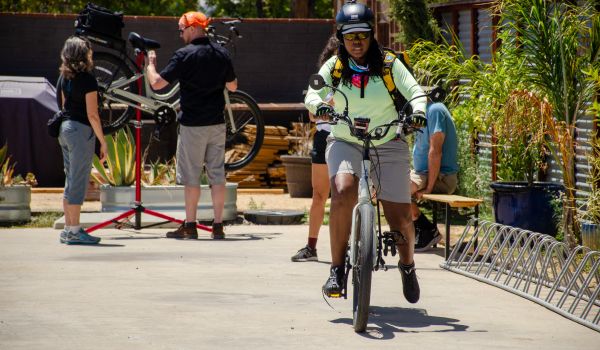Welcome to “The Mobile City,” our weekly roundup of newsworthy transportation developments.
The ride-hailing companies see self-driving cars as a savior for their bottom ines, as their widespread adoption would reduce labor costs dramatically. But Uber’s high-profile effort to build an autonomous car has produced nothing but embarrassment for the company. Meanwhile, one of the nation’s largest operators of mobility-on-demand transit service and an autonomous-vehicle pioneer that already has a fleet of autonomous cabs in service in Las Vegas have announced a joint venture that will cross-breed robo-cabs and carpooling via a shared robocab platform.
Meanwhile, in Virginia, comfortable rubber-tired tanks (aka SUVs) are being blamed for the reversal of a multi-year trend of declining passenger deaths on the state’s roads and streets.
Another mobility solution both some of those drivers and some of those walkers might want to consider is the e-bike, which uses an electric motor to boost a regular bicycle’s speed, range and hill-climbing power. The market for these bikes on steroids is growing smartly all over the developed world, and in a sign of the e-bike’s appeal, a legend in motorcycling, Harley-Davidson, has just unveiled a new e-bike that hearkens to the company’s turn-of-the-20th-century roots.
Motional, Via Team Up to Launch Shared-Autonomous-Cab Service
Via, a leading provider of mobility-on-demand transportation, sees its service as augmenting and complementing fixed-route public transit. So do the ride-hailing companies, at least some of the time, but Via’s services are more transit-like in that their vehicles pick up and drop off multiple passengers as they make their rounds based on rider demand.
On the ride-hailing side of the equation, a company called Motional, formed this year to formalize a 2019 joint venture between autonomous-vehicle technology company Aptiv and automaker Hyiundai Group, has been operating a “robotaxi” service in Las Vegas for the last two years through a partership with Lyft. Metro Magazine reports that now, Via and Motional are joining forces to launch an on-demand shared-robotaxi service starting in the first half of 2021.
The service, which will launch in one of Motional’s existing markets, will use Via’s ride-matching technology, which has already been paired with autonomous vehicles in California and Australia, to create an app-based, autonomous-shared-ride network. The app will also provide users with local public transit information with the aim of making the service a useful first- and last-mile solution for riders headed to and from transit hubs.
As the service is being introduced into the teeth of the COVID-19 pandemic, the companies are pledging to provide adequate protection for riders, including PPE, partitions, frequent sanitizing and contact tracing.
Bigger SUVs Lead to More Pedestrian Deaths in Virginia
An article in the Virginia Mercury takes note of a worrisome trend: Since 2009, pedestrian deaths on Virginia’s roads have risen steadily even as deaths of drivers continued to fall. And the biggest spike in pedestrian deaths has come since 2016, according to Mark Cole, a highway safety engineer with the Virginia Department of Transportation. Moreover, last year, the number of people killed by walking nationwide hit a 30-year high.
Some of the greater danger could be traced to the pandemic, which led drivers to go faster on newly empty streets, but a bigger contributor to the higher death toll can be traced to the vehicles those drivers were operating. Cole’s analysis of crash data led him to pin the bulk of the blame on the proliferation of SUVs and trucks on the Commonwealth’s roads: “The vehicle fleet has been changing over time with SUVs and trucks becoming the greater proportion of the fleet that’s on the road. We’ve seen an increased number of those types of vehicles involved in crashes too. SUVs and pickups which have a higher center of gravity and higher weight result in more serious crashes.”
(See Next City’s webinar discussion with Angie Schmitt to hear more about SUVs and pedestrian safety.)
One reason for the higher death toll: the sheer size of the vehicles’ front grills. A pedestrian who gets struck by a car is as likely to be thrown onto the hood as they are to be run over, while the SUVs’ five-foot-high grills ensure the pedestrian gets thrown under the vehicle. Because of this, 100 percent of SUV-pedestrian crashes at speeds of 40 miles per hour or higher result in death to the walker, while only 54 percent of such crashes involving regular passenger cars kill the walker.
Exacerbating these trends are the aging of the Baby Boomer generation and the gentrification-fueled exodus of poorer and Black residents from the city. As the suburban built environment is more hostile to walking than the city environment, things like higher speed limits on thoroughfares and lack of sidewalks place both seniors and low-income suburbanites at greater risk of death.
But while Cole, like many other state transportation officials, assigns the greatest share of the blame — 94 percent — to simple human error, Vision Zero activists and their sympathizers say bad design actually plays a greater role. They point out that road-safety improvements focus exclusively on making conditions safer for the driver (to go faster), while design solutions that could make things safer for those on foot remain overlooked. And the article notes that VDOT has taken steps to make Virginia’s roads safer for pedestrians to negotiate of late, even if it hasn’t embraced Vision Zero fully. But, the article notes, much still needs to be done to give pedestrians a greater chance of making it across the road — or walking along it — in one piece.
Harley-Davidson Unveils a Nostalgic E-Bike
No other brand of motorcycle inspires as much devotion as Harley-Davidson. One of the first motorcycle manufacturers in America, Harley is known for its big, comfortable, powerful motorcycles with their signature guttural engine sounds.
Hundreds of thousands of motorcycle enthusiasts flock to Harley-Davidson meetups and rallies each year, or at least they did before the pandemic hit. Now, The Verge reports, Harley hopes that another group of bikers will make their bikes their own.
These, however, are e-bikes — pedal-powered bicycles with electric motors that give them an extra power boost for greater speed, range and hill-climbing ability. Harley’s entry in this category is called the “Serial 1,” a reference to “Serial Number One,” the oldest known Harley-Davidson motorcycle in existence, built in 1903. The “Serial 1” e-bike also recalls the look of those first Harleys with its thick white-sidewalled tires, leather saddle and handgrips, and black frame.
Developed by the company’s Product Develoipment Center by a small group of “passionate motorcycle and bicycle enthusiasts” (as a Harley press release put it), the Serial 1 will be produced by a new spinoff company bearing the same name.
Harley is launching the Serial 1 into a booming market for electric bicycles. In addition to pure e-bike startups, several well-known bike manufactures such as Trek are making e-bikes of their own. So are automakers like BMW and Audi, and even Jeep has unveiled an eletric mountain bike. And other motorcycle companies have gotten into the e-bike game: both British motorcycle maker Triumph and Italy’s Ducati have released e-bike models. But just as Harley maintains an Americxan presence in the foreign-dominated motorcycle market, its Serial 1 should do the same for e-bikes, most of which have been imported into the United States.
The company has not released performance or price specs for the Serial 1 yet. Nor has it indicated what that electric motor will sound like when operating.
Know of a development that should be featured in this column? Send a Tweet with links to @MarketStEl using the hashtag #newstarts.

Next City contributor Sandy Smith is the home and real estate editor at Philadelphia magazine. Over the years, his work has appeared in Hidden City Philadelphia, the Philadelphia Inquirer and other local and regional publications. His interest in cities stretches back to his youth in Kansas City, and his career in journalism and media relations extends back that far as well.
Follow Sandy .(JavaScript must be enabled to view this email address)
















